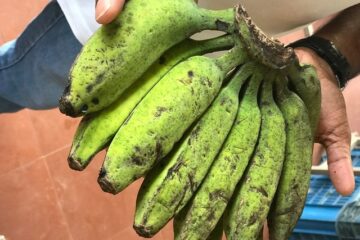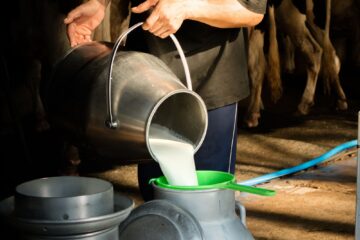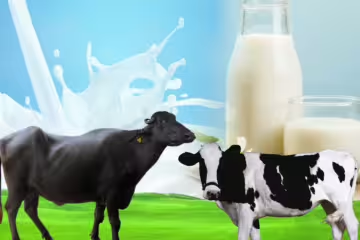Published in: May 2020
During the rainy season, a significant disease affecting goats is enterotoxaemia, commonly known as thullumari. This disease, caused by toxins produced by the bacterium Clostridium perfringens, leads to sudden death in goats, leaving no time for treatment. This bacterium naturally exists in soil and in small amounts in the intestines of goats.
While enterotoxaemia is prevalent from July to October, it can also affect young goats from March to June (hot season) and November to December (cold season). Occasionally, this disease can also impact sheep and kids. Goats aged 3-12 months are most susceptible.
Causes of the Disease
The primary cause is the consumption of large quantities of starchy or protein-rich food, such as grains, green fodder, milk, and leguminous plants. After rains, fast-growing young grass contains high starch and low fiber, which, when consumed, promotes the proliferation of bacteria in the intestines, leading to toxin production.
Additionally, young kids drinking large amounts of milk can also be affected by the toxins. Young goats lack the enzymes necessary to break down these toxins, making them highly vulnerable.
Symptoms and Effects
Excessive intake of starchy or protein-rich feed is a key factor. Some enzymes in the intestines can multiply the toxicity of these substances a thousand-fold, spreading them into the bloodstream, affecting the lungs, brain, and kidneys, resulting in sudden death. The primary impact is on the brain, leading to neurological symptoms and respiratory distress.
In young goats, the disease can manifest in acute and severe forms. In the acute form, kids often die within two hours, and sometimes up to 12 hours. Sudden death without visible symptoms is a characteristic of this disease. In severe cases, affected kids exhibit convulsions, frothing at the mouth, greenish diarrhea, and severe muscle cramps. They may have twisted necks and kick their bellies before collapsing and dying.
In adult goats, the symptoms are mainly neurological, such as drooling, muscle tremors, teeth grinding, abdominal distension, and staggering. Sheep often exhibit diarrhea, fever, severe abdominal pain, and blood-stained stools, leading to death within four hours to four days. Chronic cases show symptoms of anorexia, diarrhea, anemia, and emaciation.
Diagnosis
The disease can be diagnosed through symptoms and post-mortem examinations. Internal organs, particularly the kidneys, appear pulpy. Smears from the intestines can be examined under a microscope to detect the bacteria. ELISA tests on bodily fluids can also confirm the presence of toxins.
Laboratory Sample Collection
Collect intestinal contents of deceased goats in sterile glass tubes, adding one drop of chloroform per 10 ml. This preservative helps maintain the integrity of the sample for accurate laboratory analysis.
Treatment
Since goats often die suddenly, treatment opportunities are limited. However, in sheep, which may not die immediately, the disease can sometimes be controlled using sulfa drugs. Antitoxins mixed with nutrients can also be administered via injection.
Prevention
Avoid feeding excessive grains and rich fodder. Introduce concentrated feed gradually. Vaccinate goats against enterotoxaemia before August.
Dr. S. Jeyashankar, Dr. A. Sheeba, Regional Research and Education Center, Pudukkottai.











